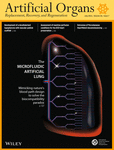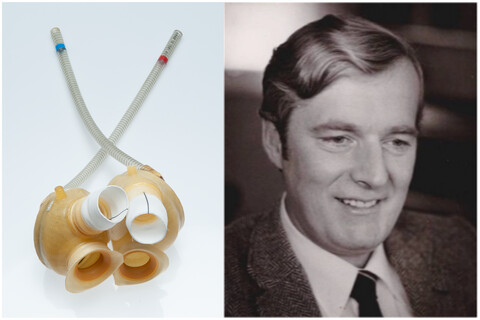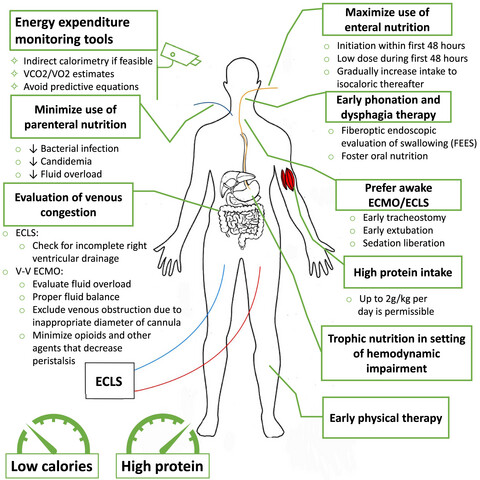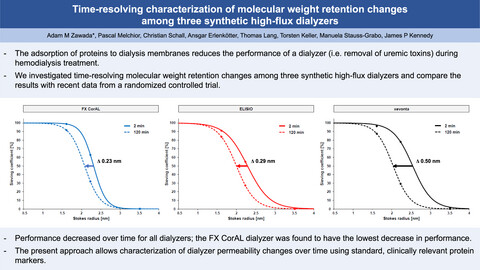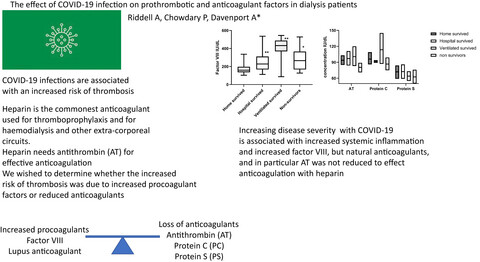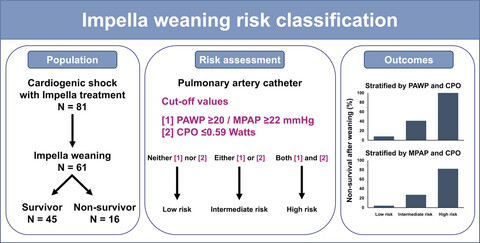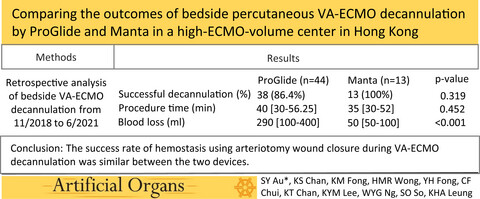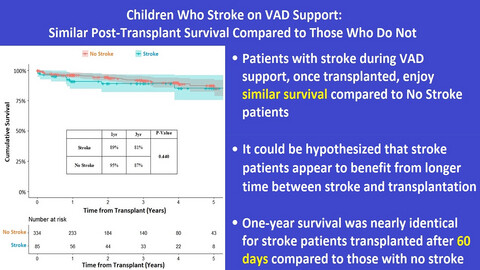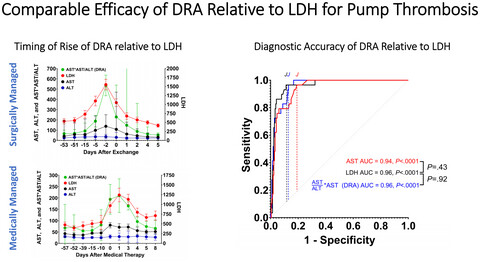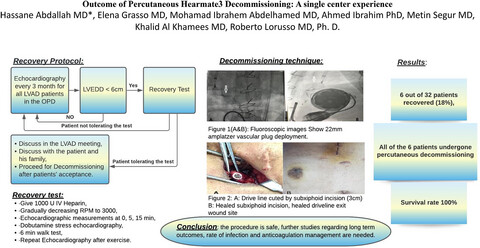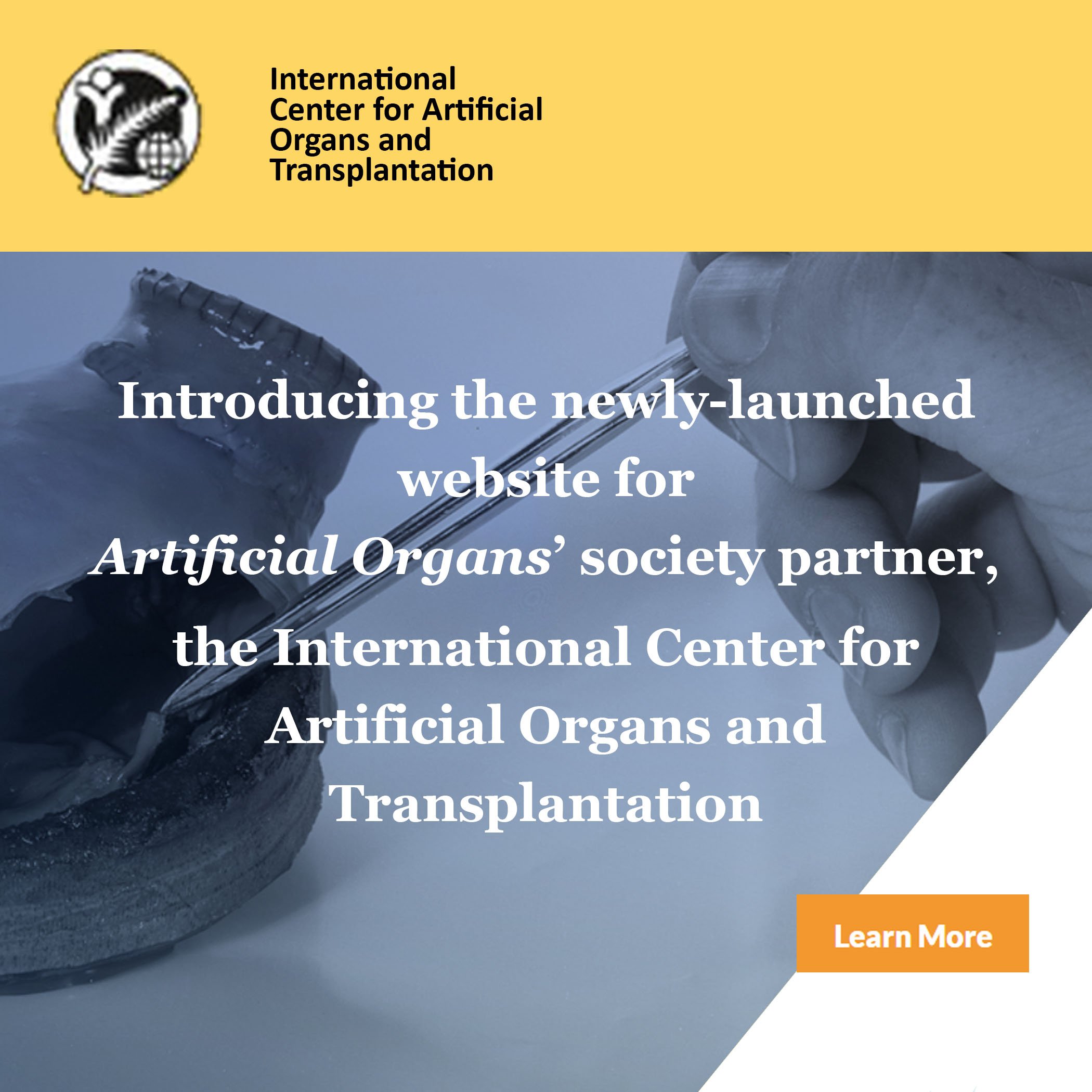Journal list menu
Export Citations
Download PDFs
COVER IMAGE
Cover Image
- Page: i
- First Published: 08 June 2022
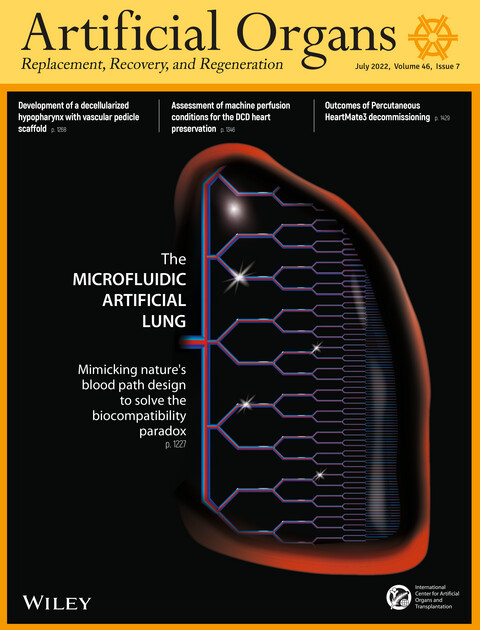
A microfluidic lung contains capillary-sized microfluidic structures which resemble computer chips. Its branching pattern somewhat resembles the branching pattern of real lung's vessels and bronchial tree. We thought it best to illustrate the artificial lung metaphorically, with the microfluidic structures in place of the natural structures. The final result is half natural, half mechanical.
ISSUE INFORMATION
NEWS
IN BRIEF
IN FOCUS
The Aveir Leadless Pacing System receives FDA approval
- Pages: 1219-1220
- First Published: 23 May 2022
PIONEER EDITORIAL
Bjarne K. H. Semb: The contriver of the first implantation of a total artificial heart in Europe
- Pages: 1221-1226
- First Published: 23 April 2022
INVITED REVIEW
The microfluidic artificial lung: Mimicking nature's blood path design to solve the biocompatibility paradox
- Pages: 1227-1239
- First Published: 06 May 2022
Correspondence between native blood vessel branching and the microfluidic blood vessel branching patterns that form the design basis for bio-inspired artificial organs. As in the physiological vasculature, a large inlet vessel branches into multiple trunk lines, each of which leads to further branching into smaller microchannels. This design paradigm preserves a smooth distribution of blood flow throughout the microfluidic network.
REVIEW
Nutrition during extracorporeal life support: A review of pathophysiological bases and application of guidelines
- Pages: 1240-1248
- First Published: 01 March 2022
SYSTEMATIC REVIEW
Temporary mechanical circulatory support for COVID-19 patients: A systematic review of literature
- Pages: 1249-1267
- First Published: 01 May 2022
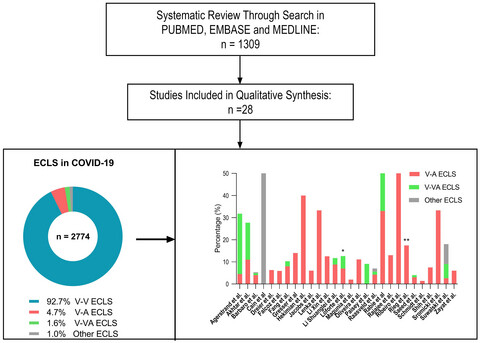
Twenty-eight observational studies reporting on the use of extracorporeal life support (ECLS) for coronavirus disease 2019 (COVID-19) have been identified. Veno-venous (V-V) ECLS was the most used support. However, veno-arterial (V-A) ECLS, Impella, or hybrid ECLS configurations were reported only in 7.3% of cases, despite a high incidence of cardio-circulatory complications, cardiac deaths. ECLS configuration change to provide adequate mechanical circulatory support (MCS) was required in 3.1% of ECLS patients. Thus, MCS might have been under-used in COVID-19 patients, and further studies are warranted to establish the correct indications and timing for MCS in COVID-19.
MAIN TEXT
Development of a decellularized hypopharynx with vascular pedicle scaffold for use in reconstructing hypopharynx
- Pages: 1268-1280
- First Published: 22 February 2022
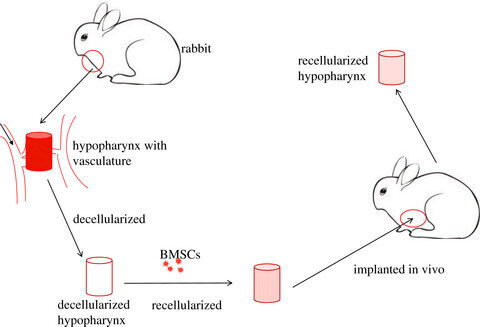
An acellular, natural, three-dimensional biological decellularized hypopharynx with vascular pedicle scaffold as the substitute materials for hypopharyngeal reconstruction could be prepared by perfusing 1% SDS and triton X-100. This composite decellularized scaffold preserved the structure and components of the natural extracellular matrix and have little immunogenicity.
Effect of ethanol washing on porcine pulmonary artery wall decellularization using sodium dodecyl sulfate
- Pages: 1281-1293
- First Published: 02 February 2022
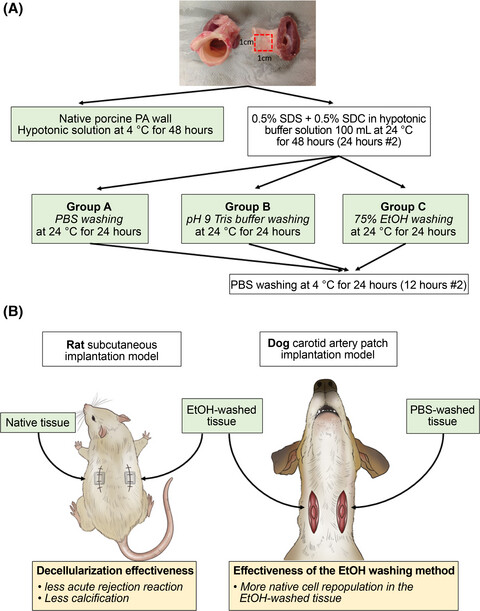
The decellularization process of a porcine pulmonary artery (PA) wall using detergents sodium dodecyl sulfate (SDS) and sodium deoxycholate is effective. The ethanol-washing method for SDS-based decellularization of the porcine PA wall can reduce the residual cytotoxic SDS content and preserve extracellular matrix structures, especially in elastic fibers; thus, it can enhance cell repopulation after implantation.
Flow assessment as a function of pump timing of tubular pulsatile pump for use as a ventricular assist device in a left heart simulator
- Pages: 1294-1304
- First Published: 07 February 2022
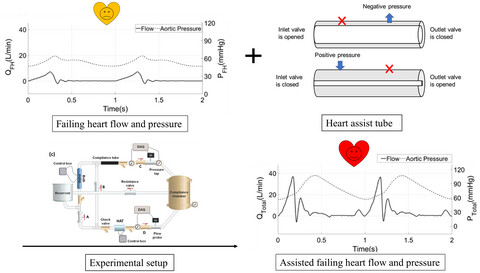
A tubular pulsatile pump was experimentally characterized in a simulated failing left ventricle. The effect of pulsation timing on flow and pressure was quantified. The proposed design provides adequate output for mechanical circulatory support, while minimizing the number of moving parts that could otherwise lead to tribological wear.
A computational framework for post-TAVR cardiac conduction abnormality (CCA) risk assessment in patient-specific anatomy
- Pages: 1305-1317
- First Published: 26 January 2022
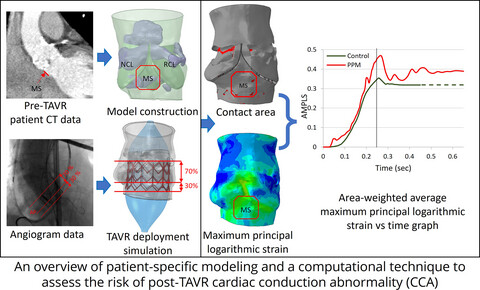
This study employs rigorous computational techniques to assess the risk of post-TAVR cardiac conduction abnormality in patient-specific anatomy. Among various factors analyzed in this study, area-weighted average of the maximum principal logarithmic strain exerted by the TAVR prosthesis in the membranous septum region during the device deployment was found to be a strong predictor for assessing CCA risk associated with TAVR devices. Such patient specific studies could further be used for preprocedural planning in order to minimize the CCA risk.
Time-resolving characterization of molecular weight retention changes among three synthetic high-flux dialyzers
- Pages: 1318-1327
- First Published: 22 February 2022
The effect of SARS-Co-V2 infection on prothrombotic and anticoagulant factors in dialysis patients
- Pages: 1328-1333
- First Published: 15 February 2022
Factors influencing the functional status of aortic valve in ovine models supported by continuous-flow left ventricular assist device
- Pages: 1334-1345
- First Published: 15 February 2022

HeartCon Magnetic and Hydrodynamic Levitation Blood Pump (RocketHeart, Tianjin, China) was used in the construction of CF-LVAD assisted animal models. With CF-LVAD support, the risk of aortic valve closure can be predicted by the combined application of pump speed, left ventricular systolic pressure, artificial vascular blood flow, mean arterial pressure and pulse pressure. The model exhibited good differentiation.
Assessment of machine perfusion conditions for the donation after circulatory death heart preservation
- Pages: 1346-1357
- First Published: 15 February 2022
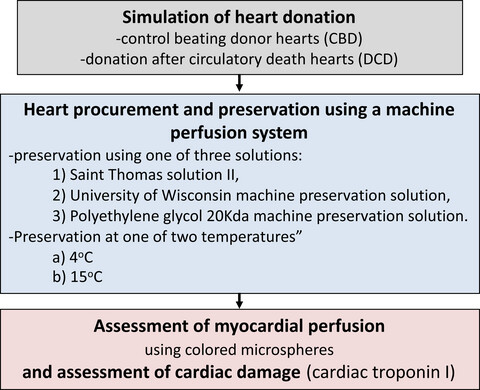
Donation after circulatory death (DCD) hearts requires machine perfusion preservation, but the conditions are not empirically defined. DCD rat hearts, or control hearts, were procured and perfused for 60 min with one of three machine perfusions solutions (MPS)—St. Thomas (ST), University of Wisconsin (UW), or Polyethylene Glycol-20k (PEG)—at one of two temperatures—4°C or 15°C. Compared to the other solutions and temperature, perfusion preservation with PEG MPS at 15°C, displayed a homogeneous tissue perfusion and reduced cardiac damage.
Hemodynamic assessment and risk classification for successful weaning of Impella in patients with cardiogenic shock
- Pages: 1358-1368
- First Published: 07 February 2022
Similarities in extracorporeal membrane oxygenation management across intensive care unit types in the United States: An analysis of the Extracorporeal Life Support Organization Registry
- Pages: 1369-1381
- First Published: 04 February 2022

In more than 10,000 ECMO runs, ELSO Registry data show ECMO mostly managed in CTICU settings; however, the majority of ECMO is not related to a cardiac surgery procedure. After adjustment, statistically significant but clinically minor on-ECMO management and physiologic metrics were observed across ICU types.
Comparing the outcomes of bedside percutaneous VA-ECMO decannulation by ProGlide and Manta in a high-ECMO-volume center in Hong Kong
- Pages: 1382-1388
- First Published: 07 February 2022
Children who stroke on VAD support: When is it safe to transplant and what are their outcomes?
- Pages: 1389-1398
- First Published: 07 February 2022
Does infection predispose to thrombosis during long-term ventricular assist device support?
- Pages: 1399-1408
- First Published: 15 February 2022

We retrospectively investigated 220 patients undergoing HVAD-implantation between July´2009 and March´2019 atour institution. Infections and thrombotic eventswere more common on long-term supported patients. Those with higher CRP levels during the infection were more likely to have ischaemic stroke(IS), though not PT. In multivariate analysis there was no significant effect of infection determining thrombotic events. In summary, both thrombotic events and infections were related to the duration of support. However, Infections do not clearly predispose to thrombosis events.
Preventing driveline infection during left ventricular assist device support by the HeartMate 3: A survey-based study
- Pages: 1409-1414
- First Published: 26 January 2022
Early high-dose continuous veno-venous hemofiltration alleviates the alterations of CD4+ T lymphocyte subsets in septic patients combined with acute kidney injury
- Pages: 1415-1424
- First Published: 07 February 2022
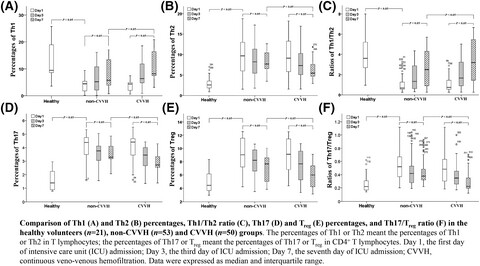
Septic patients combined with acute kidney injury exhibited decreased Th1 percentages and Th1/Th2 ratios, and increased Th2, Th17 and Treg percentages and Th17/Treg ratios; early high-dose continuous venous-venous hemofiltration (CVVH) alleviated these alterations. Th1 percentages and Th1/Th2 ratios were negatively correlated with sequential organ failure assessment (SOFA) scores, while Th2, Th17 and Treg percentages and Th17/Treg ratios were positively correlated with SOFA scores. Patients with CVVH had significantly lower SOFA scores and a shorter ICU stay.
THOUGHTS & PROGRESS
De Ritis-adjusted AST provides comparable efficacy to lactate dehydrogenase as a biomarker for detection of LVAD hemolysis or thrombosis
- Pages: 1425-1428
- First Published: 22 March 2022
CASE SERIES
Outcome of percutaneous HeartMate3 decommissioning: A single-centre experience
- Pages: 1429-1435
- First Published: 12 May 2022
CASE REPORT
Intracardiac hematoma treated conservatively by ECMO support
- Pages: 1436-1438
- First Published: 03 May 2022
HISTORY
The Ash Split Cath(TM): The best inventions are simple
- Pages: 1439-1442
- First Published: 24 May 2022
CONFERENCE REPORT
Advanced heart lung failure highlights from the 42nd ISHLT annual meeting
- Pages: 1443-1445
- First Published: 24 May 2022
LETTER TO THE EDITOR
Is extracorporeal life support evidence-based medicine? Not yet
- Pages: 1446-1447
- First Published: 18 April 2022
UPCOMING MEETING
REVIEW
Advances in microfabrication technologies in tissue engineering and regenerative medicine
- Pages: E211-E243
- First Published: 29 March 2022
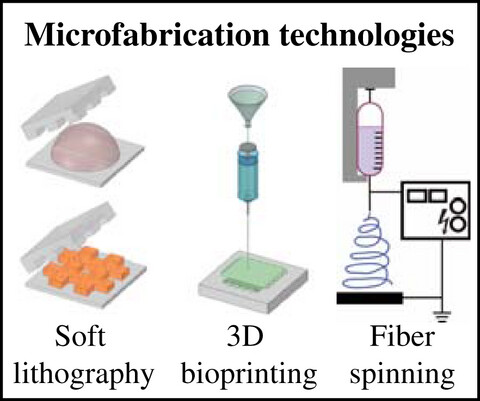
A variety of microfabrication technologies are currently utilized for several tissue engineering applications, such as soft lithography, microneedles, templated and self-assembly of microstructures, microfluidics, fiber spinning, and bioprinting. These microfabrication technologies have been implemented to construct close-to-native three-dimensional structures at numerous physiological scales, which are essential to confer the functional characteristics of living tissues. This review covers some of the most exciting research contributions from in vitro tissue engineering research to potential applications in regenerative medicine.




